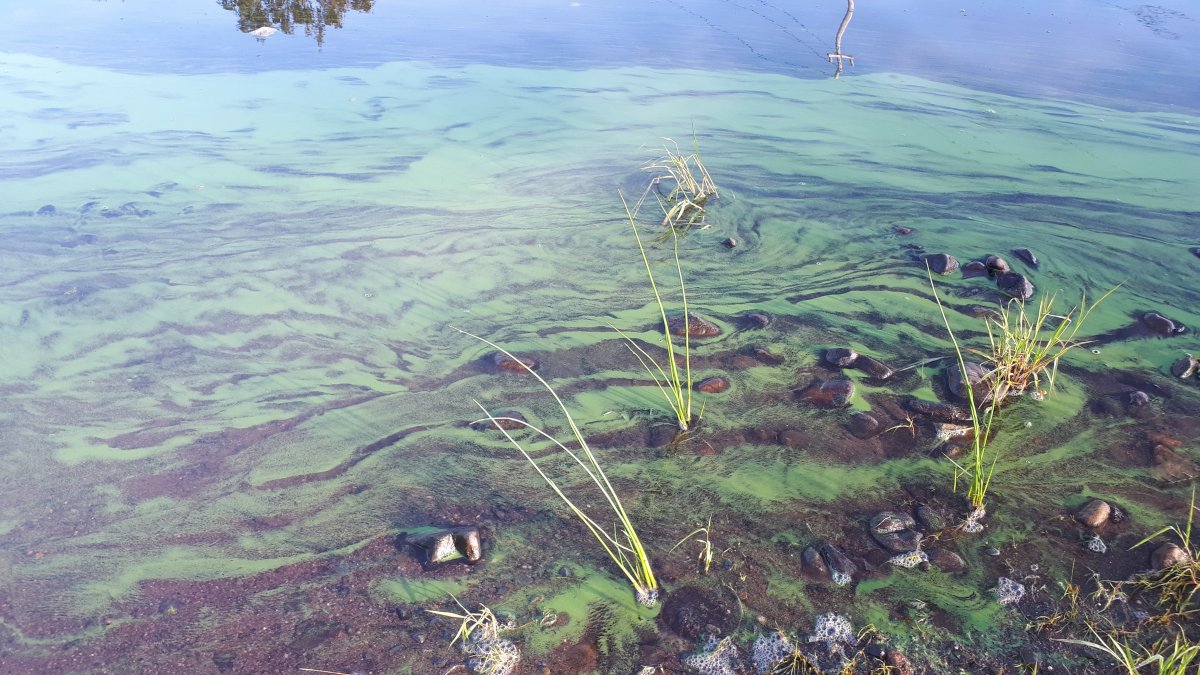Officials are warning about the risks of blue-green algae after a dog died following an exposure at Long Lake in the Halifax area last month.

Blue-green algae naturally occurs in freshwater environments and may grow when weather conditions are calm and warm. Some types of blue-green algae produce toxins, which can pose a risk to pets and people.
In an email to clients Wednesday, the Halifax Veterinary Hospital said the dog spent roughly five minutes in the water in Long Lake in Hammonds Plains on June 16 and quickly became recumbent and non-responsive, and displayed seizure-like activity.
She died while en route to the emergency hospital about two hours after exiting the water. The dog was not a patient of the animal hospital, but the notice was sent out to clients warning of the risks of blue-green algae.
“Blooms and algae can have an odor that attracts dogs, and dogs often willingly consume this material,” the notice warned. “If you have any doubt, it is best to keep your pets out of the water and away from shorelines.”
The animal hospital said Thursday that while the death occurred last month, it only received the information from Nova Scotia Agriculture on Wednesday.

Get daily National news
In a statement, Department of Agriculture spokesperson Bruce Nunn said the department was aware of the dog’s death. He noted the province publishes and updates a list of potential blooms across the province on its website.
“We encourage Nova Scotians to visit this webpage to monitor reports and learn more about how they can protect themselves and their pets from blue-green algae, as it includes resources around identifying blooms/ mats, as well as an educational video,” he said.
“We also encourage veterinary clinics across the province to continue to help spread awareness of the dangers of blue-green algae for pets by sharing resources and information with their clients.”
Nunn added that they are not aware of any other cases this year where an animal died as a result of blue-green algae exposure.
Other lakes with algae blooms
Blue-green algae has been detected in a number of lakes around the province. On Thursday, Halifax Regional Municipality said Cunard Lake Beach has been closed to swimming due to a possible blue-green algae bloom.
In July, blue-green algae has also been found in:
- Lake Ainslie, Inverness County
- Morris Lake, Dartmouth
- Lochaber Lake, Antigonish County
- Scotts Lake (near Hassett), Digby County
- Ameros Lake (near Danvers), Digby County
- Mattatall Lake, Cumberland County
- Fox Point Lake, Lunenburg County
- Indian Harbour Lake, Guysborough County
- Long Lake, Halifax
According to the province, blue-green algae can be turquoise, green, brown, red, white or some mixture of those colours. Blooms can look like grass clippings, spilled paint, pea soup or thick scum.
“In people, blue-green algae exposure when swimming can cause itchy, irritated eyes and skin. Swallowing or inhaling the water can cause headaches, fever, diarrhea, abdominal pain, nausea and vomiting. Prolonged exposure can damage the liver,” the province said on its website.
“In pets, exposure to blue-green algae can be fatal.”





Comments